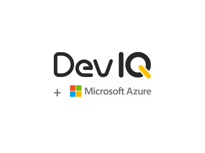Our customer has been in business 100+ years. They’re one of the largest family-owned metal distributors and service centers in the US, with 18 locations across the Southeast and Midwest. Theirlegacy data platform had served them well for more than 15 years; however, it no longer met the needs and demands of the business.

Challenge
DevIQ was engaged to define a new Enterprise Data Transformation Strategy & Architecture that would be an accessible source of truth for our client’s business data. Selecting the right tools was a critical step toward building an extensible, modern data platform that could ingest data easily from multiple data sources and data types, support existing business intelligence reporting with less management, leverage modern Data Lake, ELT, and Lakehouse tools & technologies, provide a foundation for enabling data science (AI/ML), and enable business users to find and analyze relevant data without specialized skills.
Technology Considerations
The platform needed to support a variety of sources and destinations, including Microsoft Dynamics CRM, Microsoft 365, SecturaSOFT, Azure SQL, SharePoint, ProcessMAP, RUAN, Cornerstone, Dude Solutions, Oracle ERP, eCommerce, Microsoft SQL Server, and PowerBI.
Tool Selection Process
1) Review business processes impacted.
2) Define selection criteria.
3) Identify a vendor shortlist.
4) Evaluate features, performance, and total cost of ownership (TCO) through comparative analysis, vendor demos, and proof of concept (POC).
5) Identify process change dependencies.
6) Recommend & select vendors.
Vendor Shortlist
![]()
Result
Our accelerated approach to defining an Enterprise Data Transformation Strategy & Architecture, including a structured process for tool selection, eliminated the cost and overhead of conducting a complex RFI/RFP process. Our demos and POCs (proofs of concept) were especially helpful; ourcustomer could see the basics of what would be implemented and how it could be configured and managed. As they celebrated a century of growth, this distributed metals supplier was able to take next steps toward a modern Enterprise Data Platform (EDP) – with endless possibilities to support future data & analytics needs. We were also engaged as an implementation partner.

